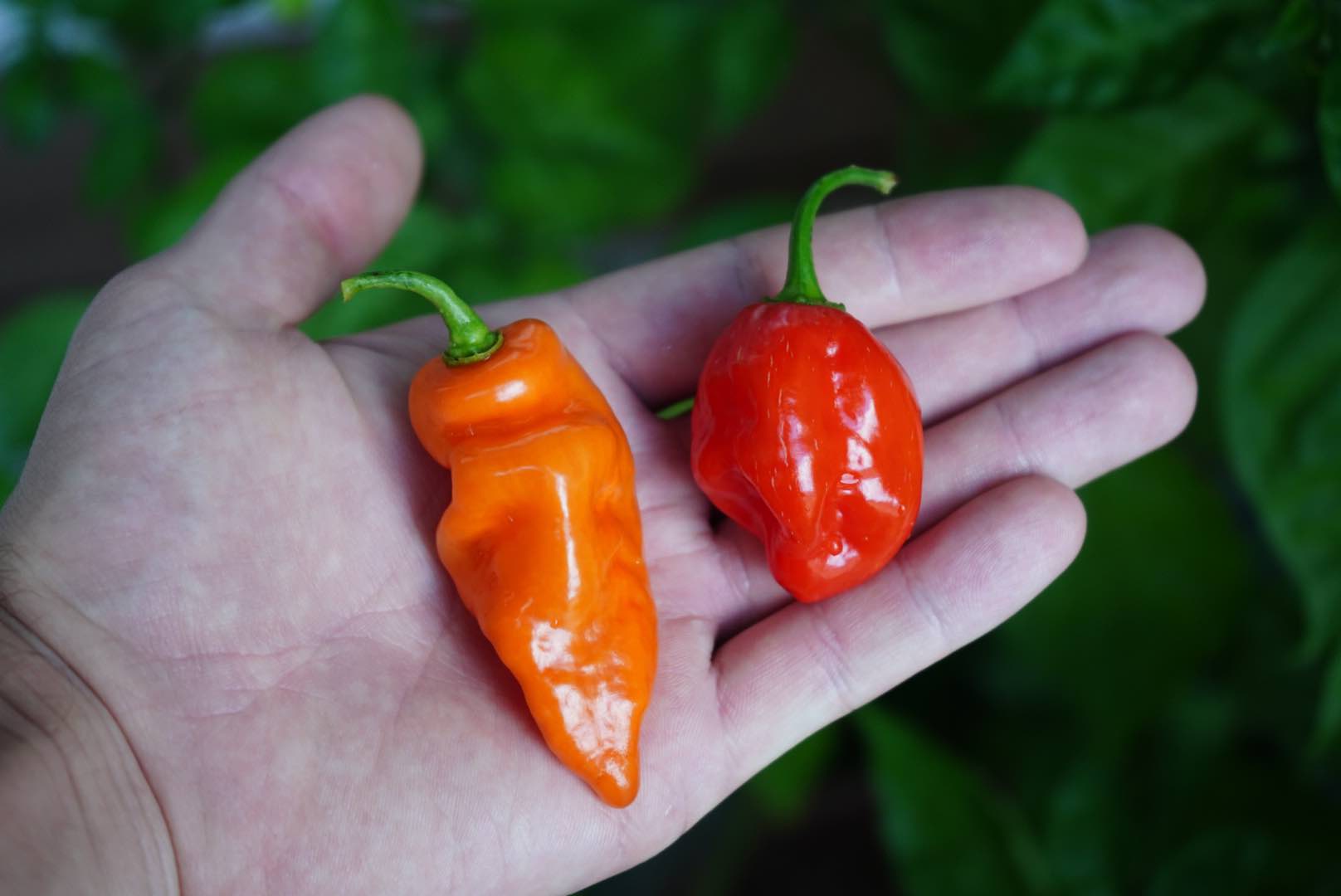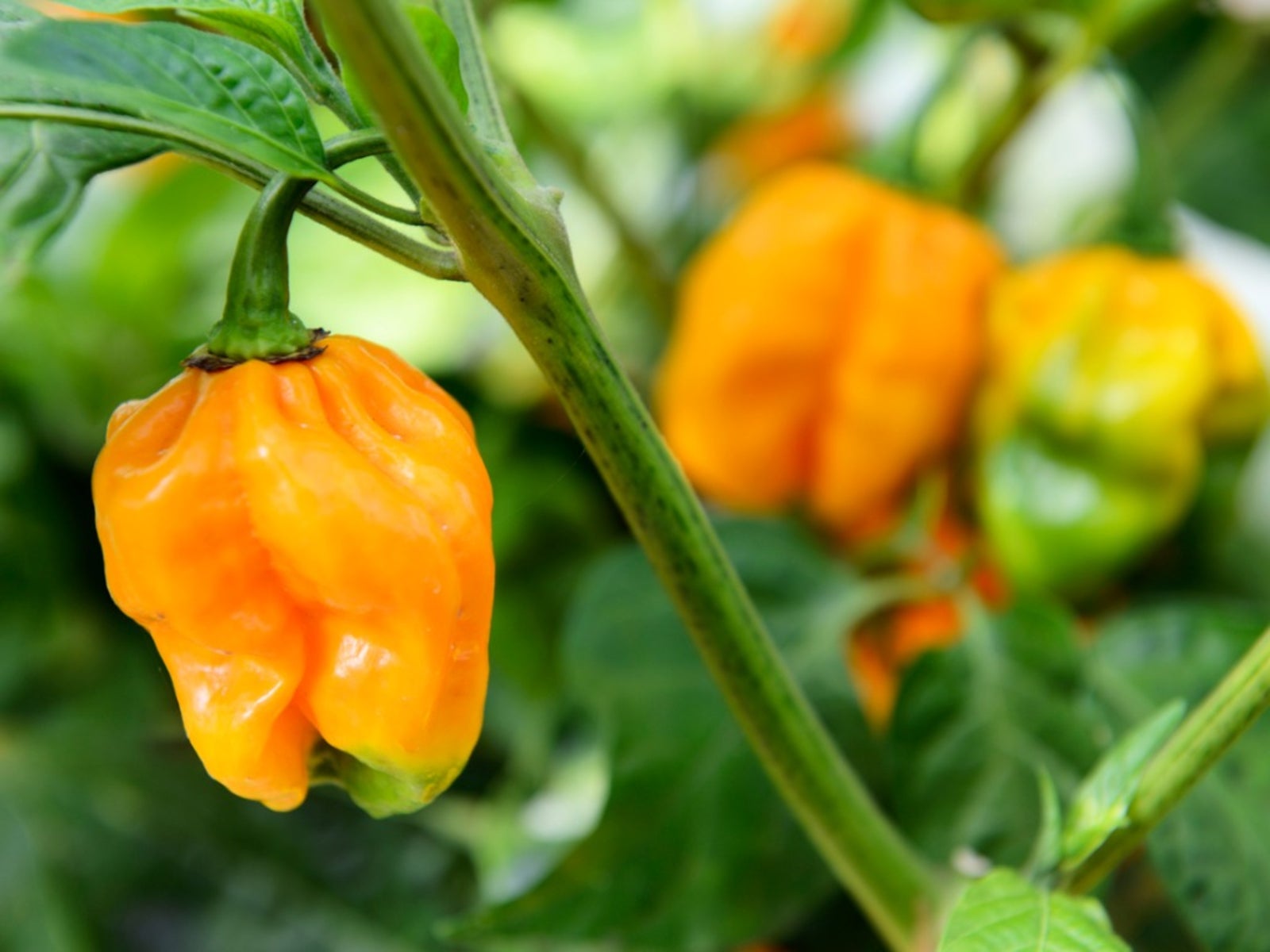To care for a Habanero plant, provide full sunlight, well-draining soil, regular watering, and occasional fertilization. The Habanero plant, known for its fiery hot peppers, can be a rewarding addition to your garden or indoor space.
With proper care, you can enjoy a bountiful harvest of these spicy peppers. Habanero plants thrive in full sunlight, so ensure they receive at least six hours of direct sunlight each day. Use well-draining soil to prevent waterlogging and root rot.
Water the plants regularly, keeping the soil evenly moist but not overly saturated. Additionally, provide occasional fertilization to promote healthy growth. By following these simple care guidelines, you can have a successful Habanero plant that produces abundant hot peppers.

Credit: peppergeek.com
How to Care for a Habanero Plant : Step by Step Guide
Choosing The Right Location For Your Habanero Plant
When caring for a Habanero plant, finding the perfect spot is crucial. Start by assessing its sunlight requirements. These plants thrive in full sun, so choose a location that receives at least six to eight hours of direct sunlight every day. Remember, proper sunlight exposure promotes healthy growth and bountiful harvests.
In addition to sunlight, consider the temperature and humidity levels of the chosen spot. Habanero plants prefer warm temperatures ranging from 70 to 90 degrees Fahrenheit. They also require high humidity levels, ideally between 50% to 70%. To maintain the right conditions, you can place your plant near a south-facing window or use a humidifier in the room.
| Location Requirements: | |
|---|---|
| Direct Sunlight: | 6-8 hours daily |
| Temperature: | 70-90 degrees Fahrenheit |
| Humidity: | 50-70% |
Preparing The Soil For Your Habanero Plant
Preparing the soil properly is essential for the optimal growth of your habanero plant. Two key aspects to consider are testing the soil’s pH and composition. Start by testing the soil pH using a soil testing kit, available at most garden centers. The ideal pH range for habanero plants is between 5.5 and 7.0. If the pH is too low or high, use limestone to raise pH or sulfur to lower it.
Next, assess the composition of the soil. Habanero plants thrive in well-draining soil, so if your soil is too compacted, consider amending it by adding organic matter like compost or aged manure. This improves the soil structure and aids in proper drainage.
In addition, organic fertilizers are excellent for feeding your habanero plant. They release nutrients slowly, providing a constant supply to support growth. Applying a balanced organic fertilizer rich in nitrogen, phosphorus, and potassium will promote healthy root development, robust foliage, and abundant fruiting.
By following these guidelines, your habanero plant will have a solid foundation to grow and thrive, resulting in a successful harvest of fiery and flavorful peppers.
Watering And Hydrating Your Habanero Plant
Proper watering and hydration are essential for the health of your Habanero plants. To determine their watering needs, you should check the moisture levels of the soil. One way to do this is by sticking your finger about an inch deep into the soil. If it feels dry, it’s time to water your plant. However, if it feels moist, hold off on watering for a few more days.
Overwatering can be detrimental to your plant’s growth, so it’s important to avoid it. Make sure the soil has proper drainage to prevent waterlogging. Similarly, underwatering can cause stress to your Habanero plant. Monitor the soil regularly and be consistent with your watering schedule.
Remember, every plant is different, and factors like weather conditions and humidity levels can affect their watering needs. By following these guidelines and paying attention to your Habanero plant’s moisture levels, you can ensure its proper care and growth.
Pruning And Training Your Habanero Plant
Pruning and Training Your Habanero Plant
Understanding the importance of pruning is crucial when caring for your Habanero plant. Pruning helps stimulate growth, increase yield, and maintain the plant’s shape. It is recommended to prune the plant during its early growth stage to encourage bushier and more compact growth.
Identifying the right time to prune is essential for the health of your Habanero plant. Look for signs of overgrowth, including crowded branches, weak stems, or yellowing leaves. Typically, pruning is done in the late winter or early spring before new growth begins.
Training your Habanero plant for optimal growth is also crucial. Use stakes or cages to support the main stem and prevent it from breaking under the weight of the peppers. Regularly tie back branches to the support structure to promote an open and well-ventilated plant, allowing better light penetration and airflow.
Preventing Pests And Diseases In Your Habanero Plant
Proper care is essential for a healthy habanero plant, and it involves preventing pests and diseases. Identifying common pests is the first step in effective pest control. Keep an eye out for aphids, spider mites, and whiteflies. To tackle pest infestations without chemicals, opt for organic pest control methods. Encourage beneficial insects like ladybugs and lacewings, which prey on pests.
Moreover, using neem oil or a homemade soap spray can help keep pests at bay. In addition to pests, diseases can also affect habanero plants. To prevent diseases, provide adequate airflow and avoid overwatering.
Proper watering techniques and maintaining good hygiene practices can reduce the risk of fungal infections. Remember to promptly remove any diseased leaves or fruits to prevent the spread of diseases. By being observant and proactive, you can ensure the health and productivity of your habanero plant.
Harvesting And Storing Habanero Peppers
Knowing when to harvest habanero peppers is crucial to ensure optimal flavor and heat. Harvesting peppers at the right time guarantees a fiery kick and a satisfying taste. Habanero peppers should be picked once they reach their peak maturity, which is when they have achieved their vibrant color and firmness. When harvesting, it’s important to wear gloves to protect your hands from the pepper’s intense heat and capsaicin, the compound responsible for its spiciness.
Properly handling and storing the harvested habanero peppers is essential to maintain their freshness and quality. Remove any damaged or spoiled peppers to prevent them from affecting the overall quality of the batch. Gently wash the peppers and pat them dry before storage. Store them in a well-ventilated container or paper bag to minimize moisture and prevent mold growth.
To extend the shelf life of habanero peppers, consider freezing or dehydrating them. Freezing habaneros helps retain their flavor, while dehydrating them preserves their heat and allows for long-term storage. Whichever method you choose, ensure the peppers are properly sealed to avoid moisture and freezer burn.
Propagating Habanero Plants
Collecting seeds for propagation: To propagate habanero plants, it’s essential to collect seeds from mature and healthy fruits. Wait for the habanero pepper to fully ripen and turn its characteristic vibrant color. Cut the pepper open and carefully scoop out the seeds, ensuring not to damage them.
Preparing the seeds for germination: Before planting, it’s crucial to remove any remaining fruit flesh from the seeds. Rinse them thoroughly to eliminate any residue. Next, place the seeds on a paper towel or drying rack in a well-ventilated area. Allow them to dry completely for a week or two, ensuring they are not exposed to direct sunlight.
Caring for the young seedlings: Once the seeds are dry, plant them in a seedling tray or small pots filled with well-draining soil. Ensure the soil is consistently moist, but not overly wet. Place the tray or pots in a warm and sunny location. After germination, provide regular watering and adequate sunlight to promote healthy growth.
Troubleshooting Common Habanero Plant Problems
- Diagnosing nutrient deficiencies:
- Yellowing leaves may indicate a nitrogen deficiency. Consider adding a nitrogen-rich fertilizer.
- Pale leaves with purple veins suggest a phosphorus deficiency. Apply a phosphorus-based fertilizer.
- Stunted growth and yellowing of upper leaves may be a sign of potassium deficiency. Apply a potassium-rich fertilizer.
- Addressing common plant diseases:
- Fungal diseases, like powdery mildew, can be prevented by ensuring good air circulation and avoiding overwatering.
- Leaf spots caused by bacteria can be treated with copper-based fungicides.
- Root rot due to overly wet soil can be prevented by using well-draining soil and allowing the plant to dry between waterings.
- Identifying environmental stress factors:
- Excessive heat can cause wilting and leaf burn. Provide shade or move the plant to a cooler location.
- Extreme cold can damage the plant. Use frost covers or bring the plant indoors during cold spells.
- Inconsistent watering can stress the plant. Maintain a consistent watering schedule and avoid over or under watering.
Frequently Asked Questions About Habanero Plant Care
Can habanero plants be grown indoors?
Yes, habanero plants can be successfully grown indoors. They thrive in warm and sunny environments, so make sure to provide them with plenty of sunlight or artificial grow lights. Keep the temperature between 70-90°F (21-32°C) and provide good air circulation. Remember to water the plants regularly and ensure proper drainage to avoid waterlogged soil. Indoor habanero plants may require additional feeding with a balanced fertilizer to promote healthy growth and fruit production.
How long does it take for habanero plants to bear fruit?
Habanero plants typically take around 90-120 days from seed to first fruit harvest. However, this may vary depending on the specific variety, growing conditions, and care given to the plant. Encourage fruit production by providing adequate sunlight, consistent watering, and regular fertilization to support plant growth.
Can you grow habanero plants from store-bought peppers?
Yes, it is possible to grow habanero plants from store-bought peppers. Choose a ripe habanero pepper with healthy seeds. Cut open the pepper, remove the seeds, and rinse off any pulp. Allow the seeds to dry completely before planting. Plant the seeds in a well-draining potting mix, keep them moist, and place them in a warm location with good sunlight. With proper care and favorable conditions, the seeds should germinate, and you can successfully grow habanero plants from store-bought peppers.
Frequently Asked Questions For How To Care For A Habanero Plant
How Do You Care For A Habanero Plant Indoors?
To care for a habanero plant indoors, provide it with direct sunlight, water regularly, use well-draining soil, and fertilize monthly.
How Often Should You Water Habanero Plants?
Water habanero plants once every 1-2 days, ensuring soil stays moist but not waterlogged.
Do Habaneros Need Full Sun?
Habanero peppers require full sun for optimal growth and fruit production.
Can Habanero Plants Survive Indoors?
Yes, habanero plants can survive indoors as long as they receive sufficient sunlight and proper care.
Conclusion
Caring for a Habanero plant involves providing it with the right amount of sunlight, water, and nutrients. It’s important to find a sunny spot and water the plant regularly, taking care not to overwater or let the soil dry out completely.
Fertilizing the plant every few weeks will help promote healthy growth and abundant fruit production. Pruning dead or damaged leaves and branches will also help maintain the plant’s health and shape. It’s crucial to be mindful of pests and diseases and take necessary measures to prevent or treat them.
By following these guidelines and giving your Habanero plant the love and care it needs, you’ll be rewarded with a bountiful harvest of fiery and flavorful peppers to enjoy in your culinary creations.

